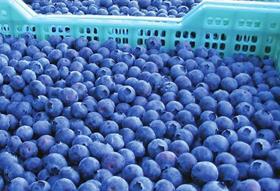
In line with the solid year-on year growth recorded in recent seasons, South America’s three main blueberry-producing nations anticipate a further rise in production and exports during 2010/11, according to figures from analyst Decofrut.
Provided current weather and marketing conditions remain stable, Chile can expect the biggest increase in output due largely to new plantations entering into commercial production.
To date, Decofrut said the Chilean crop has been developing normally, pointing towards a 20-21 per cent hike in exports to 59,500-60,122 tonnes in 2010/11, compared with 49,893 tonnes last season.
Argentina, meanwhile, has already begun shipping early varieties (Emerald and Jewel) from the region of Tucumán – the most affected fruit-producing area in South America by the frosts in August.
Despite the impact, production in Tucumán is forecast to rise by almost 30 per cent to 4,400 tonnes this season as volume was already recovering from heavy rainfall in 2009/10.
According to Decofrut data, total Argentinean production is estimated to increase by 6-7 per cent this season, provided there are no weather complications (particularly rainfall) in the weeks ahead.
Export-wise, Decofrut suggested total Argentinean volume could grow by 28-30 per cent to 16,000 tonnes, up from 12,560 tonnes last season.
Uruguay is also anticipating a boost in production and exports during 2010/11. Sendings tipped to reach 1,342 tonnes, up 9 per cent from 1,231 tonnes last season.
South America’s blueberry suppliers are continuing to carve out a solid position on the Northern Hemisphere market, according to Decofrut.
Currently, 80 per cent of the region’s crop is shipped to North America, with 17 per cent headed for Europe and 3 per cent to Asia.
Latin America and the Middle East represent other, albeit smaller destinations.



